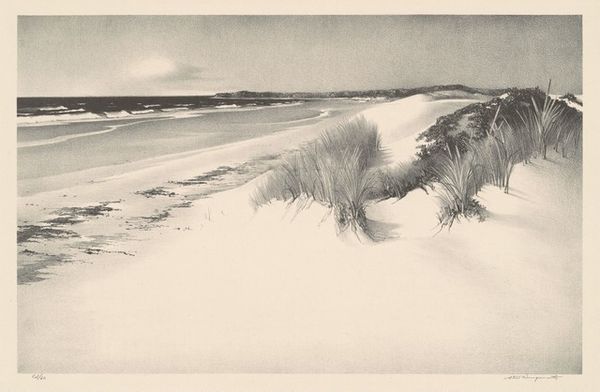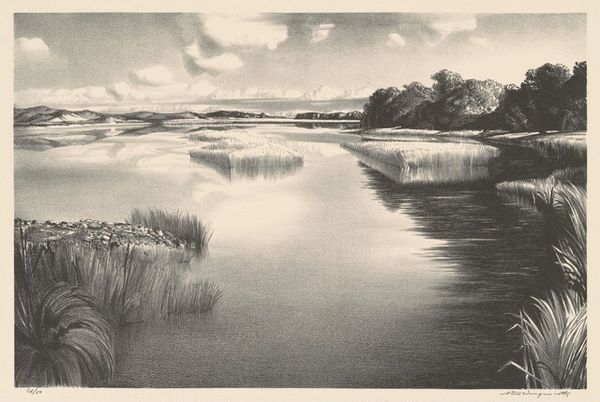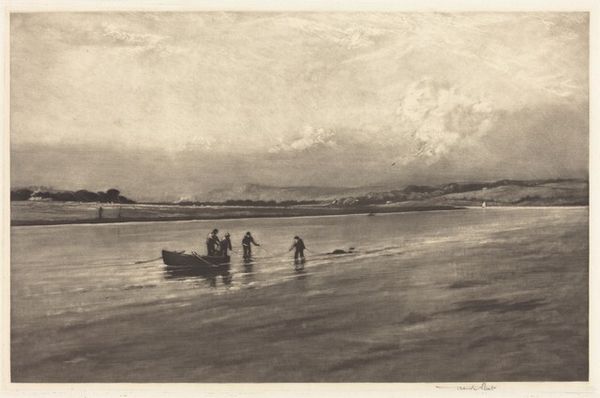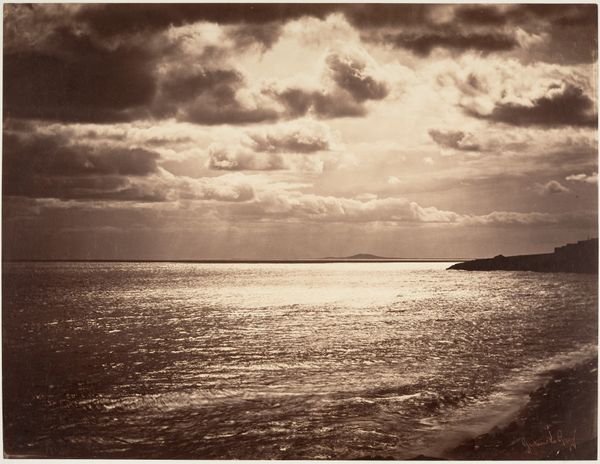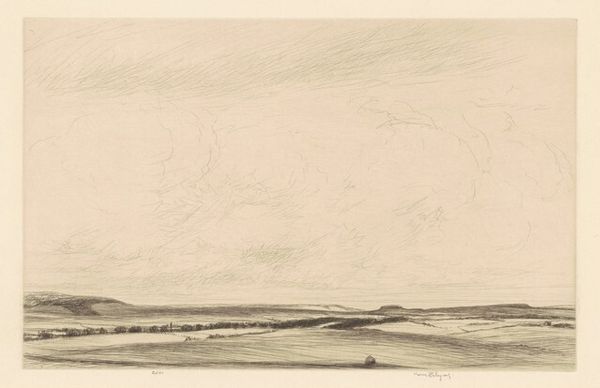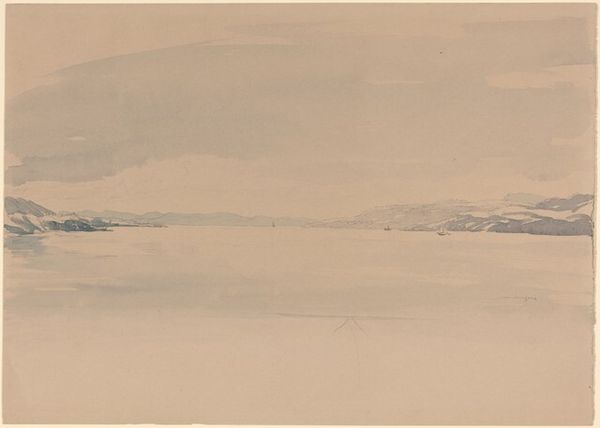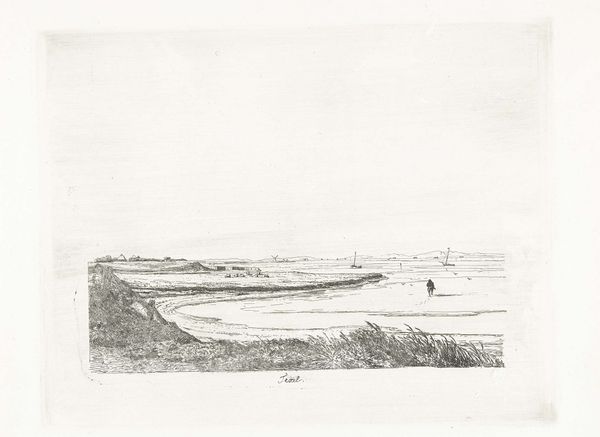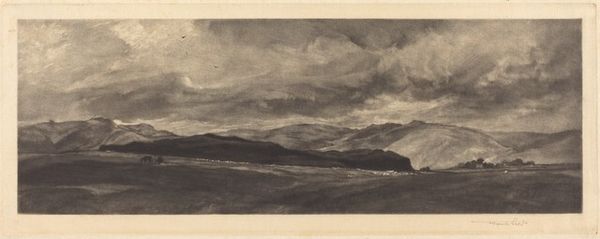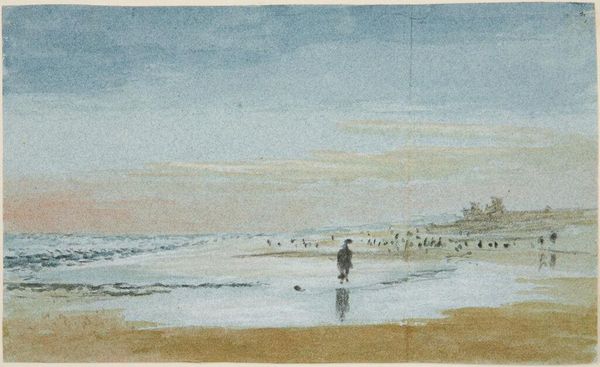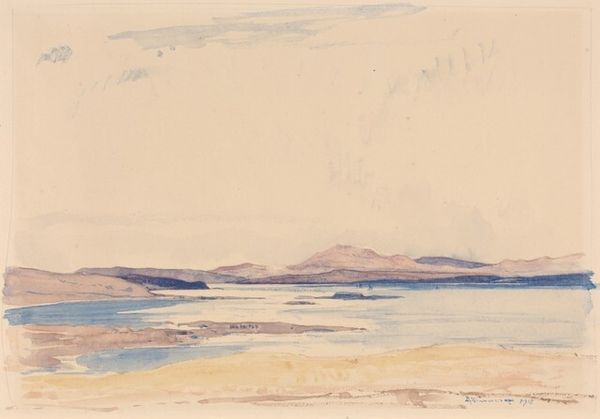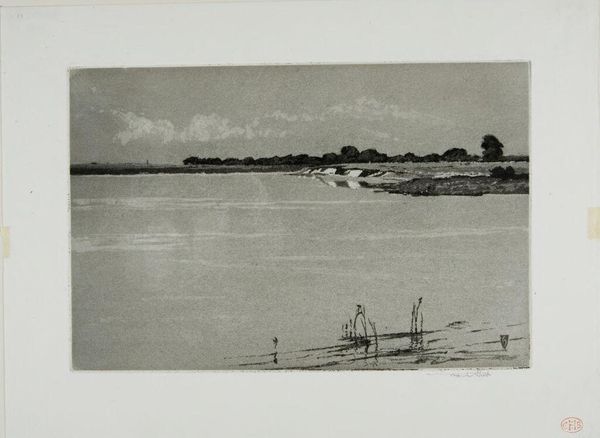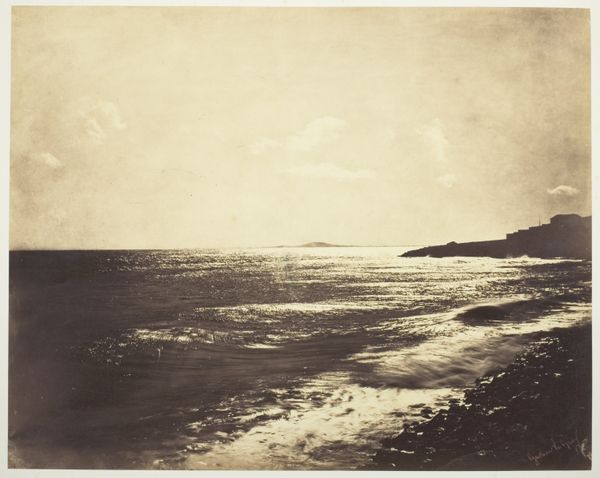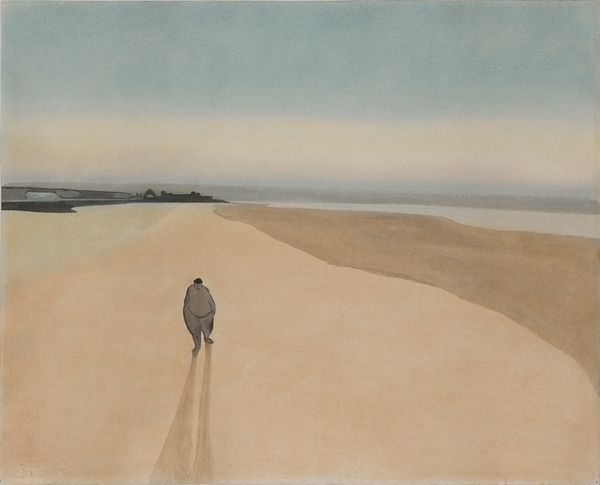
print, etching
# print
#
etching
#
landscape
#
realism
#
monochrome
Dimensions: plate: 18.9 × 35.2 cm (7 7/16 × 13 7/8 in.) sheet: 31.6 × 46.9 cm (12 7/16 × 18 7/16 in.)
Copyright: National Gallery of Art: CC0 1.0
Editor: So, we are looking at “Low Tide,” an etching made in 1927 by Percival Gaskell. It's a very serene scene. The landscape is vast and flat, giving the impression of expansiveness and tranquility. What stands out to you when you look at it? Curator: What immediately strikes me is the romantic depiction of everyday life. Here we have the glorification of a mundane scene elevated to an art form. I am curious about Gaskell's intended audience. The accessibility of prints allowed for wider distribution of art outside elite circles. What do you think about the choice to depict an ordinary landscape? Editor: That’s interesting… I hadn’t really thought about the role of printmaking. I imagine people living in urban environments might find beauty and peace in these scenes of rural labor. Was there perhaps also some influence on the aesthetics, stemming from growing social awareness? Curator: Absolutely. We see this mirroring a broader trend of elevating rural life and labor. This echoes ideas within the Arts and Crafts movement and similar social reform movements where the values of simple living and connection to the land were embraced as an alternative to industrialization and its perceived dehumanizing effects. Do you think this piece embodies such sentiment? Editor: I think it could, definitely. I initially focused on the aesthetic of the image, but when viewed through a historical and social lens, the landscape becomes not just a place, but an idea of connecting people to something essential about nature. Curator: Exactly. And understanding these connections can offer greater insight into the context of art and its role in broader conversations and movements. Editor: I completely agree! I hadn’t initially considered this work in terms of its potential political implications but it certainly seems that appreciating it that way greatly enriches our perception.
Comments
No comments
Be the first to comment and join the conversation on the ultimate creative platform.
